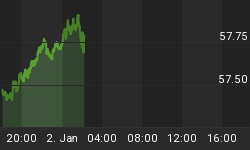Is the U.S. economy stalling out, or is it resuming its strong growth, gaining traction for a self-sustaining expansion with healthy job and income growth?
In the consensus view, the economy's weakness in the second quarter was nothing more than a "soft patch." We are no less sure that "traction" will remain elusive. It is the essential outgrowth of an upturn that has been of miserable quality right from the start.
With its advance estimate of GDP growth in the second quarter of 2004, the Commerce Department's Bureau of Economic Analysis also released benchmark revisions to the national accounts data back to 2001. Notable adjustments include a markedly lower personal savings rate and a downward revision to economy-wide corporate profits for the past couple of years.
The biggest surprise in the GDP data was the reported sharp slowdown in consumer spending to just 1% at annual rate. But what about the other major demand components: business fixed investment, residential construction and inventories? Most important next to consumption is, of course, business fixed investment. In the consensus view, business investment spending continues to post healthy gains, thanks to exceptionally strong profit growth in the past two years. We have strong reservations about both the strength of investment spending and the exceptionally strong profit growth.
Over the full year to the second quarter, nonresidential fixed investment rose by $108 billion, a remarkable rate of about 10%. That is, in fact, a healthy gain. But as already pointed out, the stellar aggregate number conceals an unusually lopsided investment pattern. The outstanding contributor is computer investment, thanks to hedonic pricing. Investment in industrial equipment, the key component for industrial production, was virtually stagnant over the year.
In addition, the accelerated depreciation allowance for capital investment spending that was part of the last tax package will expire at the end of this year. If businesses have pulled forward investment projects from 2005 into 2004 to qualify for the tax break, investment spending might slow sharply after the turn of the year.
Another highly popular argument of the bulls is the U.S. economy's excellent profit performance in the past two years, as trumpeted by most Wall Street analysts. Here again, we must plead to keep things in perspective. Overall corporate profits peaked in 1997 and hit their low in the fourth quarter of 2001, virtually the end of the recession.
Our focus is always on the profits of the nonfinancial sector. At their high in 1997, they amounted to $504.5 billion. In the first quarter of 2000, just before the start of the economy's downturn, they were down to $426.2 billion. At their low, in the fourth quarter of 2001, they amounted to $236.5 billion. In the first quarter of 2004, they had recovered to $420.7 billion.
From the low to the new high, they increased by 77%.
Given the simultaneous steep fall of share prices, this number certainly has a highly bullish flavor. On closer look, the steep rise was rather more bearish than bullish. First of all, the profit level of the first quarter of 2000 was manifestly nothing to crow about. It ushered in the economy's downturn. Drawing this comparison, a further point to be taken into consideration is that today's nominal GDP is up almost 20% since then. In 2000, those profits were equivalent to 4.4% of GDP. Presently, they are 3.6%.
Bearing the structural distortions in the U.S. economy in mind, a most important aspect is the changes in profits between different sectors. They are, really, the numbers that matter most. For us, most striking, and also most telling, is the difference in the profit performance between manufacturing and retail trade. In 1998, manufacturing earned $157 billion, far more than retail trade, which earned $66.4 billion. But just six years later, in the first quarter of 2004, manufacturing profits were drastically down to $81.5 billion and retail profits sharply up to $80 billion.
There is a similar drastic divergence in profit performance within the manufacturing sector. Profits of the producers of consumer durables and capital goods have generally collapsed into persistent losses. In 1998, they earned a collective net profit of $83.4 billion, accounting for more than 50% of total manufacturing profits. By 2000, this had shrunk to $60 billion. But in 2003, a year of recovery, they ran a collective net loss of $3.5 billion.
It is most important to realize this extreme divergence in the U.S. economy's profit performance because it is symptomatic of the marked, structural distortion that has been going on in the U.S. economy. Most remarkable, certainly, is the persistent savage profit deflation of the producers of high-tech equipment, unquestionably due to fierce competition. It is needless to say that persistent losses are prone to choke new investment.
Yet most conspicuous from a macro perspective is the flagrant diversion in the development of profits between manufacturing and retail trade. We looked back into the mid-1980s and noted that manufacturing profits were then about four times those of the retailers. Today, they are equal.
That is, of course, what has to be expected in an economy in which consumer borrowing and spending reign supreme.
Regards,















